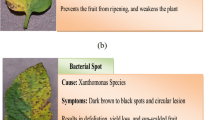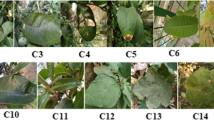Abstract
Farmers are struggling to provide the fast-growing population with sufficient agricultural products, while plant diseases result in devastating food loss. The billions of dollars spent by agriculturists in disease management often result in poor disease control without any technical support. Advances in computer vision techniques help to detect plant pathogens at an earlier level with an adaptive algorithm designed through deep learning and machine learning techniques. In this paper, we present an efficient Mutation-based Henry Gas Solubility Optimization (MHGSO) algorithm to optimize the hyperparameters of the DenseNet-121 architecture. The hyperparameter optimization is mainly done to reduce the computational complexity and the error rate of the Convolutional Neural Network (CNN). This step helps the MHGSO optimized DenseNet-121 architecture to achieve a higher classification accuracy for classifying different plant images from the PlantVillage dataset. The experimental results achieved showed that the proposed model is capable of classifying 14 leaf classes present in the PlantVillage dataset with higher classification accuracy (98.7%) and stability. When tested with a field dataset with complicated backgrounds, the proposed MHGSO optimized DenseNet-121 architecture achieves accuracy, precision, and recall scores of 98.81%, 98.60%, and 98.75%, respectively.











Similar content being viewed by others
References
Madhusudhan L (2015) Agriculture role on Indian economy. Bus Econ J 6(4):1
Roy D, Thorat A (2008) Success in high value horticultural export markets for the small farmers: the case of Mahagrapes in India. World Dev 36(10):1874–1890
Vega GL (2015) Image-based detection and classification of allergenic pollen. PhD diss., Université de Bourgogne
Athiraja A, Vijayakumar P (2020) Banana disease diagnosis using computer vision and machine learning methods. J Ambient Intell Hum Comput 2:1–20
Thangaraj R, Anandamurugan S, Kaliappan VK (2020) Automated tomato leaf disease classification using transfer learning-based deep convolution neural network. J Plant Dis Protect 2:1–14
Argüeso D, Picon A, Irusta U, Medela A, San-Emeterio MG, Bereciartua A, Alvarez-Gila A (2020) Few-shot learning approach for plant disease classification using images taken in the field. Comput Electron Agric 175:105542
Ji M, Zhang L, Qiufeng Wu (2020) Automatic grape leaf diseases identification via UnitedModel based on multiple convolutional neural networks. Inf Process Agric 7(3):418–426
Waheed A, Goyal M, Gupta D, Khanna A, Hassanien AE, Pandey HM (2020) An optimized dense convolutional neural network model for disease recognition and classification in corn leaf. Comput Electron Agric 175:105456
Sundararaj V (2016) An efficient threshold prediction scheme for wavelet based ECG signal noise reduction using variable step size firefly algorithm. Int J Intell Eng Syst 9(3):117–126
Barbedo JG (2018) Impact of dataset size and variety on the effectiveness of deep learning and transfer learning for plant disease classification. Comput Electron Agric 153:46–53
Andrushia AD, Trephena Patricia A (2020) Artificial bee colony optimization (ABC) for grape leaves disease detection. Evol Syst 11(1):105–117
Zhao B, Huang Bo, Zhong Y (2017) Transfer learning with fully pretrained deep convolution networks for land-use classification. IEEE Geosci Remote Sens Lett 14(9):1436–1440
Jose J, Gautam N, Tiwari M, Tiwari T, Suresh A, Sundararaj V, Rejeesh MR (2021) An image quality enhancement scheme employing adolescent identity search algorithm in the NSST domain for multimodal medical image fusion. Biomed Signal Process Control 66:102480
Vallabhajosyula S, Sistla V, Kolli VKK (2021) Transfer learning-based deep ensemble neural network for plant leaf disease detection. J Plant Dis Protect 2:1–14
Atila Ü, Uçar M, Akyol K, Uçar E (2021) Plant leaf disease classification using EfficientNet deep learning model. Ecol Inf 61:101182
Lu J, Tan L, Jiang H (2021) Review on convolutional neural network (CNN) applied to plant leaf disease classification. Agriculture 11(8):707
Nandhini S, Ashokkumar K (2021) Improved crossover based monarch butterfly optimization for tomato leaf disease classification using convolutional neural network. Multimed Tools Appl 80:18583–18610. https://doi.org/10.1007/s11042-021-10599-4
Ezzat, Dalia, Aboul Ella Hassanien, and Hassan Aboul Ella. "An optimized deep learning architecture for the diagnosis of COVID-19 disease based on gravitational search optimization." Applied Soft Computing (2020): 106742.
Darwish A, Ezzat D, Hassanien AE (2020) An optimized model based on convolutional neural networks and orthogonal learning particle swarm optimization algorithm for plant diseases diagnosis. Swarm Evol Comput 52:100616
Hinz T, Navarro-Guerrero N, Magg S, Wermter S (2018) Speeding up the hyperparameter optimization of deep convolutional neural networks. Int J Comput Intell Appl 17(02):1850008
Cabada RZ, Rangel HR, Estrada MLB, Lopez HMC (2020) Hyperparameter optimization in CNN for learning-centered emotion recognition for intelligent tutoring systems. Soft Comput 24(10):7593–7602
Aszemi NM, Dominic PDD (2019) Hyperparameter optimization in convolutional neural network using genetic algorithms. Int J Adv Comput Sci Appl 10(6):269–278
Bi C, Wang J, Duan Y, Baofeng Fu, Kang J-R, Shi Y (2020) Mobilenet based apple leaf diseases identification. Mobile Netw Appl 2:1–9
Priyadharshini RA, Selvaraj A, Madakannu A, Annamalai M (2019) Maize leaf disease classification using deep convolutional neural networks. Neural Comput Appl 31(12):8887–8895
Agarwal M, Gupta SK, Biswas KK (2020) Development of Efficient CNN model for Tomato crop disease identification. Sustain Comput Inf Syst 28:100407
Cristin R, Santhosh Kumar B, Priya C, Karthick K (2020) Deep neural network based Rider-Cuckoo Search Algorithm for plant disease detection. Artif Intell Rev 2:1–26
Yogeshwari M, Thailambal G (2021) Automatic feature extraction and detection of plant leaf disease using GLCM features and convolutional neural networks. Mater Today Proc
Appalanaidu MV, Kumaravelan G (2021) Plant leaf disease detection and classification using machine learning approaches: a review. Innov Comput Sci Eng 2:515–525
CS231n: Convolutional Neural Networks for Visual Recognition. Stanford University CS231n: Convolutional Neural Networks for Visual Recognition. [Online]. Available: http://cs231n.stanford.edu/. [Accessed: 22-Jan-2021].
Zare S, Moosa A (2020) Simultaneous fault diagnosis of wind turbine using multichannel convolutional neural networks. ISA Trans
Kumar A, Gandhi CP, Zhou Y, Kumar R, Xiang J (2020) Improved deep convolution neural network (CNN) for the identification of defects in the centrifugal pump using acoustic images. Appl Acous 167:107399
Hashim FA, Houssein EH, Mabrouk MS, Al-Atabany W, Mirjalili S (2019) Henry gas solubility optimization: A novel physics-based algorithm. Futur Gener Comput Syst 101:646–667
Sander R (2015) Compilation of Henry’s law constants (version 4.0) for water as solvent. Atmos Chem Phys 15(8):4399–4981
Hughes D, Marcel S. An open access repository of images on plant health to enable the development of mobile disease diagnostics. arXiv preprint arXiv:1511.08060 (2015).
Geetharamani G, Pandian A (2019) Identification of plant leaf diseases using a nine-layer deep convolutional neural network. Comput Electr Eng 76:323–338
Repositório Digipathos: Base De Imagens De Sintomas De Doenças De Plantas PDDB, www.digipathos-rep.cnptia.embrapa.br/jspui/handle/123456789/2.
Raskutti G, Wainwright MJ, Bin Yu (2014) Early stopping and non-parametric regression: an optimal data-dependent stopping rule. J Mach Learn Res 15(1):335–366
Akil M, Saouli R, Kachouri R (2020) Fully automatic brain tumor segmentation with deep learning-based selective attention using overlapping patches and multi-class weighted cross-entropy. Med Image Anal 63:101692
Author information
Authors and Affiliations
Corresponding author
Ethics declarations
Conflict of interest
The authors declare that they have no conflict of interest.
Additional information
Publisher's Note
Springer Nature remains neutral with regard to jurisdictional claims in published maps and institutional affiliations.
Rights and permissions
About this article
Cite this article
Nandhini, S., Ashokkumar, K. An automatic plant leaf disease identification using DenseNet-121 architecture with a mutation-based henry gas solubility optimization algorithm. Neural Comput & Applic 34, 5513–5534 (2022). https://doi.org/10.1007/s00521-021-06714-z
Received:
Accepted:
Published:
Issue Date:
DOI: https://doi.org/10.1007/s00521-021-06714-z




